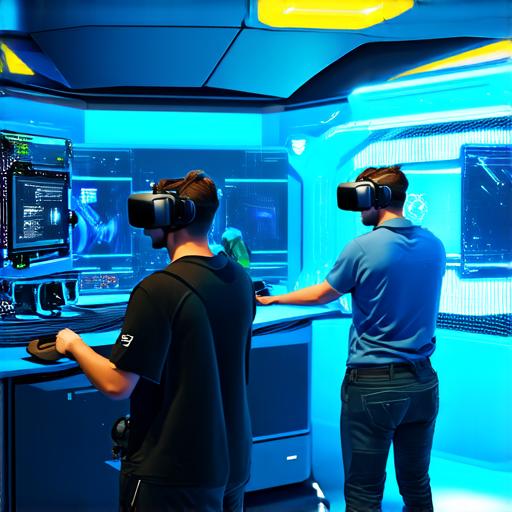In the ever-evolving world of technology, Virtual Reality (VR) continues to captivate and intrigue.
1. Immersive Social Experiences
The pandemic has underscored the importance of social connection, even in a virtual world. Developers are focusing on creating more immersive and interactive social experiences within VR platforms. This could range from collaborative gaming to virtual meetings that mimic real-life interactions.
“Social VR is the future,” says John Carmack, CTO of Oculus. “We’re seeing a shift towards more social applications, where people can interact and engage with each other in a shared virtual space.”
2. AR/VR Integration
The boundary between Augmented Reality (AR) and VR is blurring. Developers are exploring ways to seamlessly integrate these technologies for a more enriching user experience. This could lead to innovative applications in education, entertainment, and even healthcare.
3. 5G and Wireless VR
With the rollout of 5G networks, wireless VR is becoming a reality. This means users can enjoy high-quality VR experiences without being tethered to a PC or console. This trend could make VR more accessible to a wider audience.
4. Emergence of XR
Extended Reality (XR) is an umbrella term that includes AR, VR, and Mixed Reality (MR). As XR technologies converge, we can expect to see more hybrid experiences that blur the lines between the physical and digital worlds.
5. Haptic Feedback
Haptic technology provides tactile feedback in a virtual environment. This could significantly enhance the immersive quality of VR experiences. From realistic touch sensations to force feedback, haptics are set to transform the way we interact with virtual worlds.
6. AI and Machine Learning

AI and machine learning are being integrated into VR development for more intuitive and responsive interfaces. This could lead to personalized experiences tailored to individual users, making VR even more engaging and immersive.
FAQs
Q: What are some real-life examples of VR trends in 2021?
A: Examples include social VR platforms like Facebook Horizon, wireless VR devices like the Oculus Quest 2, and AI-powered VR experiences like Google’s Project Starline.
Q: How will haptic feedback enhance VR experiences?
A: Haptic feedback can provide a more realistic and immersive experience by simulating touch sensations in the virtual world. This could range from feeling textures to experiencing physical forces.
